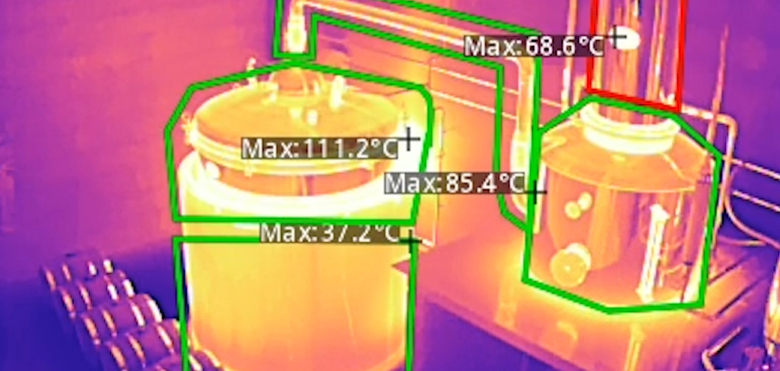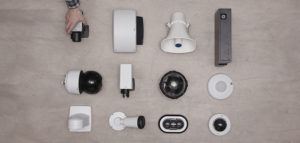Temperature monitoring in hazardous areas can optimize operational efficiency
Across a wide range of industrial processes, temperature is an indicator of machine or system health. While rising temperatures can indicate the potential for overheating, lower temperatures can signal a pressure leak. As a result, the ability to effectively monitor system temperature is an important contributor to optimizing operational efficiency.
Most seriously, rapidly rising temperature can be an advanced warning sign of fire, whether the risk emerges from a process, machinery, or materials. Consequently, temperature monitoring within any industrial setting is crucial in contributing to improved safety.
While there are various approaches to temperature monitoring, the challenge is increased in hazardous areas. Typical to many industrial sites, hazardous areas are defined by the risk of explosion caused by the ignition of a gas or dust. They are classified as Zones/Divisions, and further divided dependent on the risk level.
For this reason, to effectively monitor temperatures within hazardous areas, it’s not only important to select the right technology. But, all equipment used within a specified Zone/Division, including temperature monitoring equipment, has to achieve the right certification level as well.
The advantage of thermometric cameras
Temperature sensors in the form of thermometers are commonly integrated within machinery and systems, but they only provide a reading from a specific point. The problem is that point-by-point measurement doesn’t give a clear representation of overall machine or system temperature, so it can’t be relied on to accurately indicate overall system health.
Alternatively, thermometric cameras capture temperature data across a wide area, simultaneously, at temperatures that typically range from -40 °C to 350 °C (-40 °F to 660 °F). This can provide a complete view of system and process temperature in real time.
What’s more, a thermometric camera doesn’t need direct contact, meaning that it can monitor the temperature of the intended area of detection from an installation point located several meters away. With this remote measurement capability, a thermometric camera can capture temperature data even in hard-to-reach locations.
Crucially, the connectivity of an IP (internet protocol) thermometric camera to a network enables data integration. With this capability, a network thermometric camera can provide real time alerts, as well as trend monitoring over time.
Temperature monitoring technology for hazardous areas
Within hazardous areas, hand-held, explosion-protected thermometric cameras can be used to take readings across a variety of locations. But, like a fixed thermometer, they only provide a snapshot, single-point-in-time temperature measurement.
With this manual approach, they cannot provide the 24/7 coverage required to detect emerging issues. And, only taking temperature readings at intervals, this doesn’t provide regular or consistent trend data required to identify predictive maintenance requirements.
Instead, an explosion-protected thermometric camera provides the advantages of continual, real-time temperature monitoring, with automated alerts, and is certified for use in hazardous areas.
Thanks to the effective detection range of thermometric cameras, a device designed and certified for Zone/Division 2 can also measure temperature within a Zone/Division 1 defined area as well. This approach can significantly reduce the cost of temperature monitoring, while optimizing operational efficiency.
Optimizing operational efficiency
Using a thermometric camera for temperature monitoring within hazardous areas enables informed decisions about the ongoing process, helping to keep production up and running, while ensuring the operation is as efficient as possible.
Continually tracking and recording temperature allows effective planning for predictive maintenance. Based on captured temperature data, operations teams can identify and monitor trends over time to optimize maintenance planning and overall equipment effectiveness. Crucially, this approach can also help to prevent costly downtime.
Alongside a thorough predictive maintenance schedule, continuous, real-time temperature monitoring also means that any related, urgent maintenance needs can be quickly detected. For example, a thermometric camera can trigger temperature-based events and send a notification if the temperature exceeds or falls below a set threshold, or if the temperature changes rapidly. To check specific areas, spot temperature readings can also be taken manually from anywhere within the camera’s field of view.
To quickly act on temperature data and send a notification to maintenance team members on the ground, it’s also possible to connect a network speaker, designed and certified for use in hazardous areas, to enable audio alarms. This communication enables warnings to be passed to personnel on site, and facilitates quick contact with maintenance team members to rapidly resolve developing challenges.
To maximize practical use in real industrial situations, a thermometric camera can also measure the temperature of moving objects, such as items on a conveyor, as well as the rotating machinery itself. At the same time, it’s able to avoid false alarm notifications, as smart filtering technology can ignore events that don’t require action, such as the exhausts of passing vehicles.
Operating as a temperature sensor, a thermometric camera can also maximize process efficiency by providing real time temperature data for process control. This level of monitoring and connectivity enables automated process management and optimization.
Indispensable tools for modern process industries
Explosion-protected thermometric network cameras achieve the benefits of temperature monitoring, even within hazardous locations. Optimizing predictive maintenance, as well as data collection for improved process efficiency and control, thermometric cameras can increase productivity and reduce downtime. This makes them indispensable tools for modern process industries.
Find out about Axis explosion-protected thermometric camera designed and certified for Zone/Division 2 hazardous areas.




